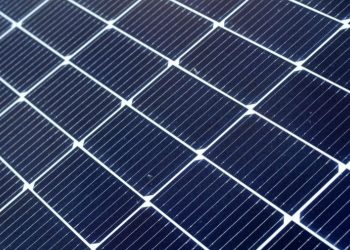Solar racking manufacturer SunModo will soon debut its latest pitched rooftop mount, NanoRack, to the residential market. On this episode of Solar Spotlight, CEO Steve Mumma discusses the system features and installation considerations built into NanoRack.
A written portion of this podcast is below but be sure to listen to the full episode on your favorite podcast service.
SPW: You guys are saying that NanoRack “isn’t rail-less”. Since it doesn’t have rail, what do you mean by that?
Steve Mumma: It’s kind of semantics. Yes, it doesn’t have rail. By definition, that means it’s rail-less, and that does give all of the benefits of a “traditional rail-less system.” I think the reason we’re saying it’s not really rail-less is that, to a certain extent, rail-less, I think, kind of has a bad name in the industry. A lot of installers have tried it, and not liked it because of the complexity and the level of training involved. Historically, most of the rail-less installers have been the larger national installers that really see the benefit of the logistics advantages of not shipping rail around. But smaller installers, that doesn’t benefit them as much, so what’s the point in them going rail-less? NanoRack addresses the issues that have made a lot of people that have tried rail-less hate it. So we’re saying it’s not rail-less, because it’s not rail-less like people generally think of rail-less as being.
What are the issues with conventional rail-less systems and how does NanoRack address them?
As we started looking at developing a rail-less system, we talked to a lot of installers both, those that have done rail-less and love it, and those that have done rail-less and hated it. And the two main things that keep people kept coming back to, one is wire management. Rail provides just a perfect, ideal place to manage your wires. Then the second is the level of precision required to install rail-less system. Rail is very forgiving. You’re basically going to have two rails per row of modules, and those rails can be off by a pretty large amount — inches — and the system will still be fine. However, with rail-less, since you’re attaching modules to the mounts, those mounts have to be on the roof pretty precisely located.
How does the design of NanoRack reduce opportunities for installer error?
So that was a major focus with our design of NanoRack, is what can we do to make it very, very difficult for an installer to make an error while installing it? And it’s not because we don’t trust the installers. It’s because we know they’re going fast, and they have a lot to get done out there. With NanoRack, there’s a couple of things we’ve done. One is that it is a deck mount system. So, we’ve eliminated the process of trying to find a rafter and drill pilot holes and that saves a lot of time, but it also is a major source of potential installer error anytime there’s a missed pilot hole that needs to be filled with sealant. Another big part of it with NanoRack is that we’ve taken the vast majority of the work of installing the system off of the roof and onto the ground. All of the brackets and clamps and roof attachments are attached to the modules before they go up on the roof.
You’ve said that NanoRack is designed for installers who have sworn they would never go rail-less. Why should those installers switch to NanoRack?
What I’m really excited about is the potential that NanoRack offers for people that have traditionally been doing rail systems. As we discussed earlier, many of those people have tried rail-less and rejected it because while it’s nice to not have to deal with the logistics of moving rail around, rail systems are just simpler, they’re easier, and for crews that don’t do them repeatedly, all the time, rail-less is just not going to save these guys time. So, with NanoRack being a system that is actually simpler to install than rail, and substantially faster to install than rail, we can bring those rail-less benefits to basically everybody.
This podcast is sponsored by SunModo



















